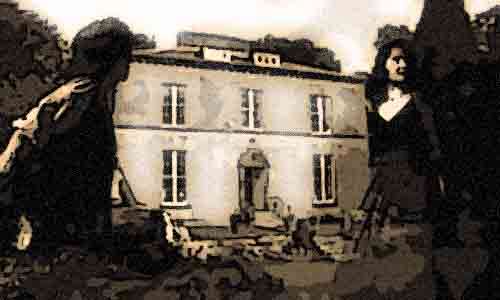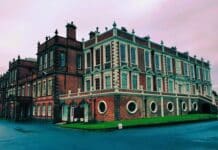JOSIE PALMER describes the dark history behind the real-life inspiration for Wuthering Heights
Whernside Manor, formerly known as High Rigg End, sits on the flank of Whernside, one of the mountains that forms part of the Howgills in Cumbria.
It lies within Dentdale, a peaceful, picturesque dale. But local legends speak of a black coachman riding the roads and the sound of clanking chains. The house, now a bed and breakfast, boasts of having at least five resident ghosts.

This old manor clearly has many dark and hidden stories.
High Rigg End was home to the Sill family for many years. Their fortune came not from farming but from the plantations they owned in Jamaica.
Local folklore has it that the Sills brought slaves to Dentdale as their servants. Recent discoveries show that this was not just a local tale. An advertisement placed in a Liverpool newspaper in 1758, shows that Edmund Sill of Dent offered a ‘handsome reward’ for the return of an escaped slave. The slave was called Thomas Anson ‘a Negro man, about five feet six inches high, aged 20 years or upwards’.
Whernside Manor’s Link to Wuthering Heights
In recent years, a connection between the Sill family and Wuthering Heights has also been uncovered. Heathcliff is described by Emily Bronte as having skin colour ‘as dark as though it came from the Devil’. It would seem that another local story relating to the Sill family may have influenced Emily, who stayed near to Dentdale for a period of time. The story tells of the adoption of an orphan boy called Richard Sutton, who was described as a “foundling” when brought to Dentdale. Rather than bringing the child up with the family’s three sons and one daughter, he was kept with the slaves.
Whernside Manor inspires Emily Bronte
Local historian Kim Lyon suggests that Emily Brontë combined another scandal from Dentdale to inspire the story of Catherine and Heathcliff’s doomed romance. She appears to have mixed the relationship between Richard Sutton and Ann Sill with local gossip that Ann fell in love with a black coachman.
The coachman subsequently disappeared without a trace, and it is said that Ann’s brothers had decided such a union would be inappropriate. A century later, a human skeleton was found beneath flagstones in the cellar. Were these perhaps the remains of Ann’s lover, the disappeared coachman?
The family home can still be seen in Dentdale, and folklore has it that there were iron rings on the cellar walls – rings for chaining the slaves.
Questions about the slaves go unanswered and locals are often reluctant to talk about this dark chapter in their history.
Others tell stories of how the River Dee that drains Dentdale, ran red with blood the night the slaves were all murdered.
The current owners have found no evidence of the rings in the walls, but the sound of chains is still heard to this day, mournfully echoing in the dale as the coachman rides.









Kim Lyon was my mother and I grew up at Whernside Manor, this article is full of errors. It is however an outstanding example of sloppy journalism!
Are you joking me. I went in that cellar today.